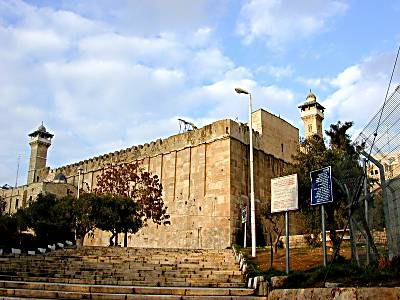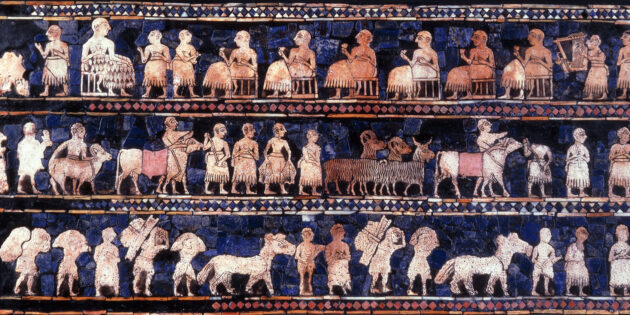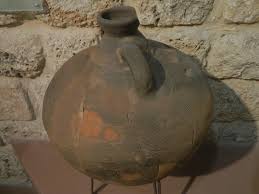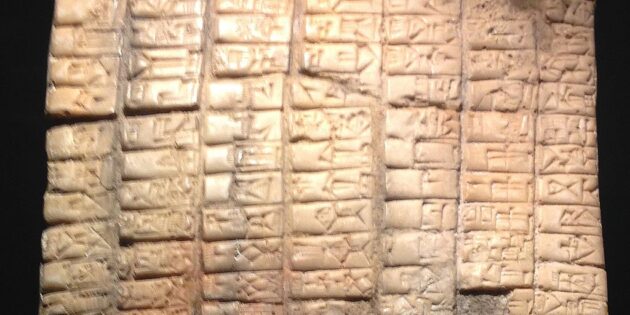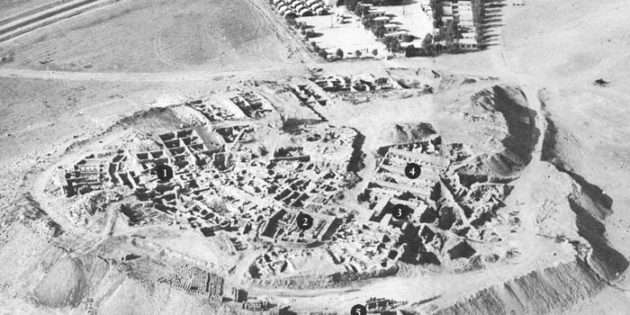Home » Archives for May 2008
Archive for May, 2008
For 40 years Claude Schaeffer directed excavations at Ras Shamra in Syria. There he and his colleagues uncovered the remains of the long lost city of Ugarit, a Late Bronze Age metropolis in early Biblical times. And among the ruins of Ugarit, he found the archives of the ancient city The clay tablets discovered in […]
More than 350 years pass before we hear of another journey into the cave—this time by a monk who came to the Holy Land with the Crusaders. In an inner cave, he found at first only “earth dyed the color of blood”, but when he dug up the earth, “he came upon the bones of […]
Was this the lost continent of Atlantis? Did a volcano part the Red Sea? BAR readers may well wonder what a small volcanic island—now a cluster of islands—in the Aegean Sea has to do with Biblical archaeology. The answer is threefold. Most important, this article is about a high civilization that was destroyed about 1500 […]
No one knows where they came from. They produced the world’s first great civilization, yet they vanished from the annals of history for more than 3,000 years. Although they were conquered by foreign invaders, their language and literature survived for centuries. We call them Sumerians, and the land where they lived, a region between […]
The city of Castra, located adjacent to the Carmel coast, was one of the most important centers in the area during the Byzantine period, combining the benefits of a coastal town with the flourishing economy of the Carmel range. In the Christian sources of the 6th century CE, the title “Samaritan Castra” appears in a […]
Observations on the New Epigrapher’s Analysis I would like to provide BAR readers with a response to the article entitled “New Ebla Epigrapher Attacks Conclusions of Ousted Scholar,” BAR 06-03. The BAR article is a summary of an article by Professor Alfonso Archi which appeared in the Italian journal, Biblica (Vol. 60, 1979, pp. 556–566), […]
Bible and Beyond The findings of archaeologists sometimes seem to confirm the Biblical text. At other times, the excavation results present a problem. Perhaps the best known case of the latter is Jericho. Most scholars date the Israelite conquest of Canaan to the Late Bronze Age, to a time (13th century B.C.) when, according to […]
One of the most controversial issues in modern Biblical studies is the increasingly assertive contention that the Bible is essentially useless as a historical source, even for the period of the Israelite united monarchy (tenth century B.C.E.). David and Solomon, it is claimed, are mythological, not historical. The Bible, according to this school of thought, […]
The New Encyclopedia of Archaeological Excavations in the Holy Land Ephraim Stern, editor (Jerusalem- Israel Exploration Society and Carta; New York- Simon and Schuster. 1993) 4 vols, 1,552 pp., $355 This is one of those monumental publications that will make history. It is an absolutely essential reference work in any archaeological library, institutional or private. […]
Sukenik died in 1953. Avigad blossomed. Between 1953 and 1955, Avigad directed excavations at Beth She‘arim, uncovering a series of catacombs containing Jewish burials of the second and third centuries C.E., including what may be the tomb of Judah ha-Nasi, the compiler of the Mishnah. In 1956 he published with Yigael Yadin the Dead Sea […]


